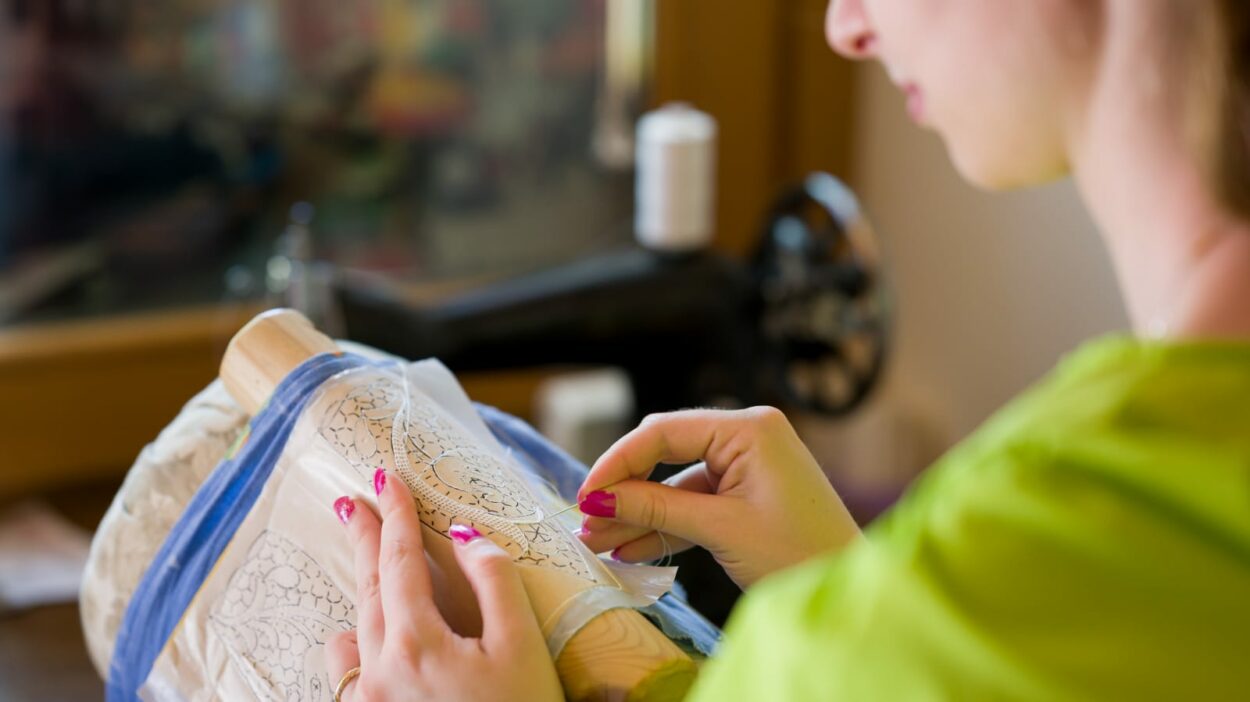During a press tour held by the Slow Flow Veneto Waterways Experience, we deepened our knowledge of the history of lace in Burano and learned about the new generation of lace products.
Slow Flow Veneto Waterways Experience collaborates with multiple tour operators in the Venetian region in order to offer an eco-responsible and green tourism experience. During the press tour the group organized—which included biking along the newly marked cycling paths and boating down the rivers—, we boarded the boat of Massimiliano Zane, a member of Slow Flow Veneto Waterways Experience, and marveled at the beauty of Burano, situated north of the Venetian lagoon and neighboring the island of Murano, known for its glass.
Burano, a small island jewel of about twenty hectares and four islets connected by canals and bridges, exhibits as many houses as colors. The inhabitants of this ancient fishing village tell us that their husbands used to come back from fishing and recognize their houses in the mist thanks to their vibrant colors, but also that in order to put bread on the table, the women used to make lace. A true age-old craft of the Veneto region.
Lace holds an important place in the reputation of the island of Burano. Today, the island has a few embroidered, among them Ludovica Zane, daughter of Massimiliano Zano, who works with her grandmother in the family business Laguna Fla Group. At 16 years old, she is the youngest embroiderer on the island. From her grandmother, Sandra Mavaracchio, who holds all the techniques and secrets of needlepoint, also called “air stitch”, the famous stitch of the island of Burano and specific to figurative, geometric and abstract patterns, Ludovica learns every day.

In the small shop, the aunt still applies herself to embroider in front of the curious visitors of this know-how which oscillates between traditions and modernity. Hundreds of hours of work for unique pieces. Then little by little the lace becomes an industry. All the women of Burano resist and work in teams and with the needle. They participate in the clothing of all the European courts of the time.
The Museum of Merletto exhibits its treasures. As the young Ludovica tells it, even if today, the competition, from the Far East is tough, it is necessary to hold on and make lace evolve towards the design of the high fashion. Following the example of France and its lace of Calais-Caudry or its point of Alençon and the Flemish countries, stemming also from the lace traditions of the court, the Italian lace must be supported by the institutions to better export itself, explained the young girl.
“Our tradition and know-how must be maintained. The schools must reopen and young people must accept to be formed hundreds of hours to take over and challenge new projects, in order to make enter the lace of Burano in the intangible heritage of UNESCO.”
Today, we find lace used for tablecloths, bed linen, handbags, fans, masks, accessories and collections for home and fashion design. There are also luxury lace shops in Burano.

The Origins of Venetian Lace
Venetian lace has mysterious origins. Legend says it began when a sailor gave a girl an aquatic plant, which she turned into exquisite lace. Venetian lacemakers became renowned for their intricate work, initially producing lace for church vestments. Guilds and civic organizations also supported lace crafting.
Burano needle lace reached its peak between 1620 and 1710, favored by European nobility. Lace collars, cuffs, and accessories were in fashion, with a popular style featuring collars fanning out behind women’s heads. Portraits of nobles wearing lace helped solidify their status. Venetian lace was valued by European nobles, even appearing in Elizabeth I’s wardrobe. Burano lace became the most coveted, spreading to France through Catherine de Medici.
Competition from French and Flemish centers led to Venetian lacemakers borrowing motifs and creating punto Burano. Revival attempts occurred but were hindered by aristocratic associations. Private lacemaking persisted, and a revival happened in the late 1800s. A lace school and factory were established, and today, the craft continues thanks to tourism on the island of Burano.











